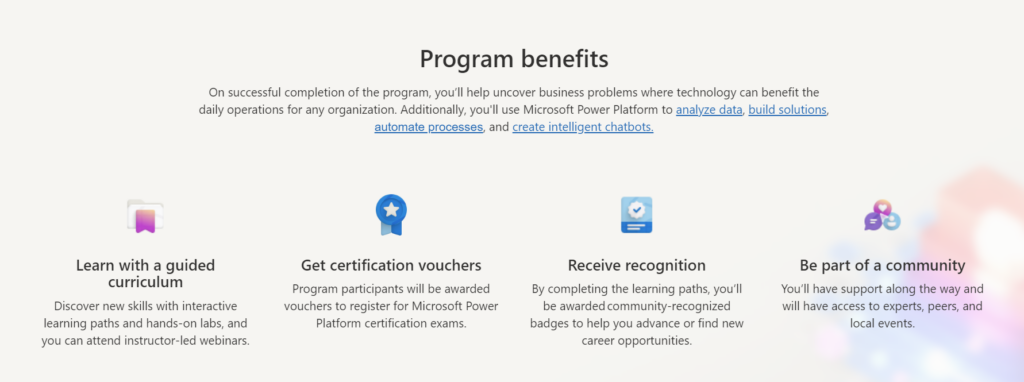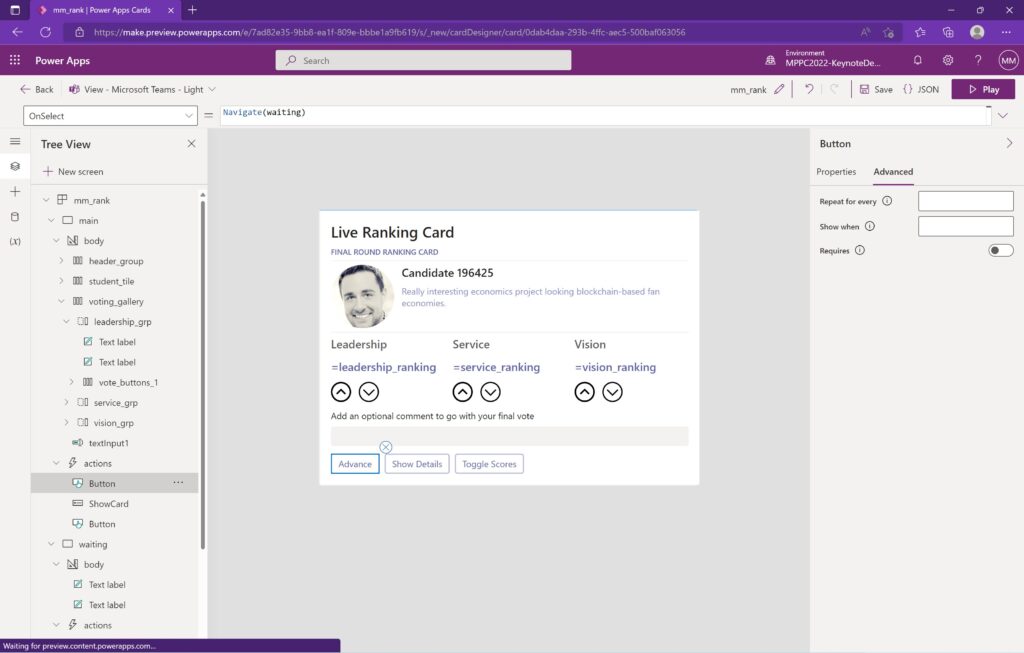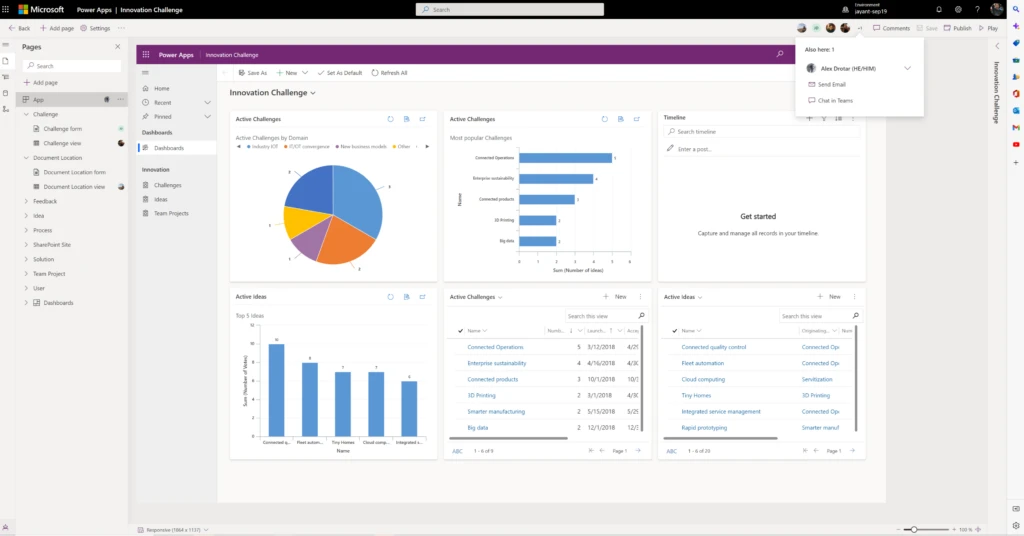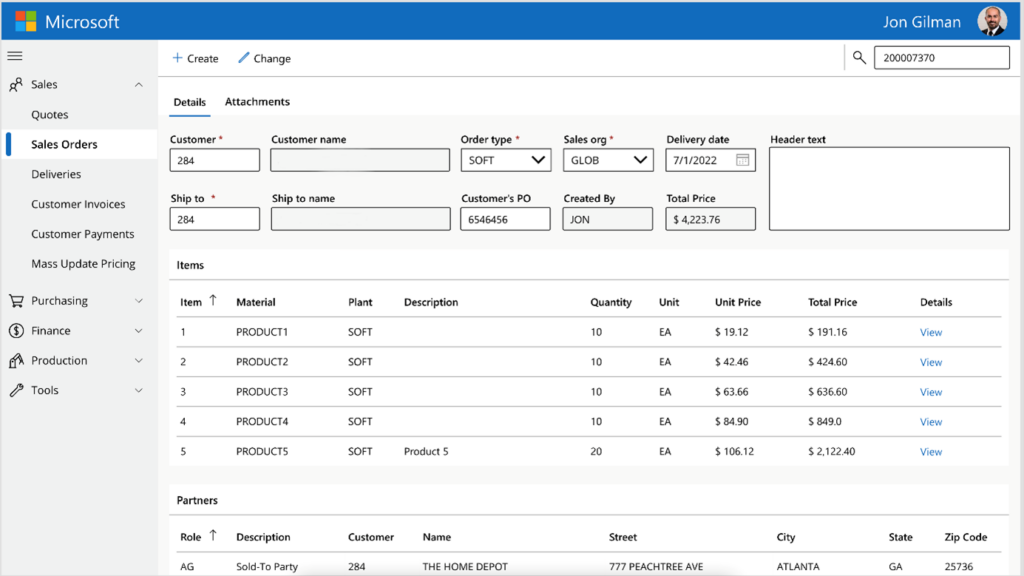Recent announcements at the Power Platform Conference create new opportunities for users to learn low-code, new ways to surface apps in more environments, and more.
People are looking to develop new skills, advance their careers, and get involved in user communities during this period of economic uncertainty. More than 80 percent of users and potential users of low-code or no-code platforms say that they would be more willing to work for a company that invests in their technical upskilling, according to the Microsoft Low-Code Trend Report 2022.
I’m excited that today, the first day of the inaugural Microsoft-sponsored Power Platform Conference, will support opportunities for upskilling through low-code. This Microsoft community-led event is a celebration of the passion and ingenuity of the Microsoft Power Platform community and will help attendees build new skills with low-code technologies. The conference will also showcase individuals who successfully leveraged Microsoft Power Platform to transform their careers. The Power Platform Conference features low-code thought leaders from Microsoft, community experts, partners, and customers from all over the world who have gathered to share their expertise and gratitude with the Microsoft Power Platform community.
I want to thank the Microsoft Power Platform community for making this event possible. All previous events, user groups, hackathons, and boot camps have been building to this moment. By centralizing best practices, technical skills, and growth opportunities, you have built a powerful network of support to uplift everyone in the community. Your stories and contributions continually inspire us to further empower people looking to learn low-code.
As we continue to strive to make the platform more collaborative, intuitive, and productive for all makers and users, I’m excited to share some of the new program and feature announcements, including:
- Power Up skilling program: An upskilling initiative created to help individuals from non-technical backgrounds advance their careers with low-code technology and skills.
- Cards in Microsoft Power Apps: A new lightweight way to design and deliver micro-apps directly inside Microsoft Teams, Microsoft Outlook, and more with an adaptable user interface (UI).
- Coauthoring in Power Apps: A feature enabling makers and developers to now design and develop the same app at the same time—just like coauthoring in Microsoft 365.
- Enhanced SAP integrations: New and improved ways to connect your SAP data to your Microsoft Power Platform solutions.
- Integrated virtual agent matching makers to makers in Power Apps: A conversational bot (powered by Power Virtual Agents) designed to maximize and expand an organization’s maker network.
Introducing the Power Up skilling program
According to the Microsoft Low-Code Trend Report 2022, 80% of users agree that using Microsoft Power Platform increased their marketability to potential employers. We’re excited to empower more people to grow their careers through Microsoft Power Platform.
As a result, we’re announcing the new Power Up skilling program to help citizen developers build key skills in low-code to advance their careers. Whether you want a more enriching experience in your current job or want to switch careers and become a low-code citizen developer, this program is for you. You can read dozens of career-switcher success stories on the Power Apps blog.
This program offers a three-month, guided curriculum with self-paced learning, hands-on labs, app development challenges, instructor-led sessions, and the ability to connect and learn from a robust and supportive Microsoft Power Platform community. Microsoft Power Platform certifications, vouchers, and community-recognized badges will enable these participants with credentials and confidence to pursue citizen developer jobs.

We would also like to invite Microsoft Power Platform experts to drive greater impact by volunteering their time and expertise by holding Q&A sessions, webinars, and helping with assessments.
To learn more about how to apply for the program, begin your upskilling journey, or volunteer your expertise, visit the Power Up program page for more information.
New features coming to Microsoft Power Platform
Cards for Power Apps
Low-code makes it easier for app users to do their work, particularly when they’re using Teams. In a hybrid world, getting work done in one app, collaborating with colleagues in another, and constantly switching back and forth between them is a toll that quickly adds up.
That’s why we’re introducing cards in Power Apps: a new lightweight way to create and send micro-apps to share, collect, and connect data and make critical business decisions—all without ever leaving Teams or Outlook.
Cards are built on Adaptive Cards, a popular framework for platform-agnostic snippets of UI that developers have used to serve hundreds of millions of users. Now, Power Apps is giving low-code developers the ability to create cards in the familiar drag-and-drop Power Apps designer, complete with Microsoft Power Fx integration.
The new cards designer is built from the ground up to target today’s rich interactive platforms with focused, timesaving experiences for your business—including polls, data gathering, and surveys as well as more advanced business use cases.
Cards will be available in Power Apps soon in preview, you can learn more on the Power Apps blog.

Coauthoring in Power Apps
To enhance collaboration while building apps, we are excited to announce coauthoring in Power Apps. Coauthoring builds on commenting by enabling developers of all backgrounds to simultaneously edit applications in real time using the Microsoft 365-like experience.
Coauthoring allows multiple makers—whether pro or citizen developer—to make changes to the app at the same time and see those changes in real time. As a result, teams can innovate together and build stronger connections between professional developers and business domain experts, a critical ingredient to maximizing low-code development.
Coauthoring will be available in preview by next month. You can learn more on the Power Apps blog.

Enhanced SAP Integration
Seamless collaboration is key to maximizing low-code technologies, as is leveraging pre-built solutions to rapidly solve challenges in organizations. Integrations between SAP and Microsoft Power Platform have proven critical to the community, especially for core productivity scenarios. Therefore, I’m excited to share that due to acquiring Clear Software, Microsoft Power Platform now includes more than 150 Microsoft Power Automate cloud flows and more than 25 Microsoft Power Apps specifically designed to expedite SAP business processes.
These apps and flows were designed to be operational within a couple of hours and support a variety of scenarios like order to cash or procure-to-pay.
More information is available on the Power Automate blog.

Introducing an integrated virtual agent in Power Apps
As makers progress through their development journey, discovering the right support resources is critical. That’s where the integrated virtual agent comes in.
The virtual agent (powered by Power Virtual Agents) surfaces relevant external resources to assist you with your app development process and promotes greater knowledge-building across the internal maker community.
The virtual agent integrated in Power Apps is available now, you can learn more on the Power Apps blog.
Virtual agent matching makers in Power Apps
As Power Apps enables more of your workforce to contribute to app development, the need for learning, development, and mentorship grows too. The integrated virtual agent enables maker matching so that makers can collaborate better, build apps efficiently, and tap into your Power Apps community.
Maker matching intelligently connects new makers with other experienced makers, advisors, and internal community members who have the right skills and who can directly help when needed most. Maker matching will be available soon in preview within the integrated virtual agent.

What’s next?
Thank you to the community members, customers, partners, and Microsoft employees who are attending the first-ever Power Platform Conference. We hope you have a fantastic experience and we’re looking forward to seeing you at Microsoft Ignite (October 12 to 14).
For those who wish to follow the Power Platform Conference remotely, look up #MPPC22 on Twitter and LinkedIn or follow the conference on Twitter at PowerPlatformConf.
And, lastly, for those interested, please join the Microsoft Power Platform community.











You must log in to post a comment.